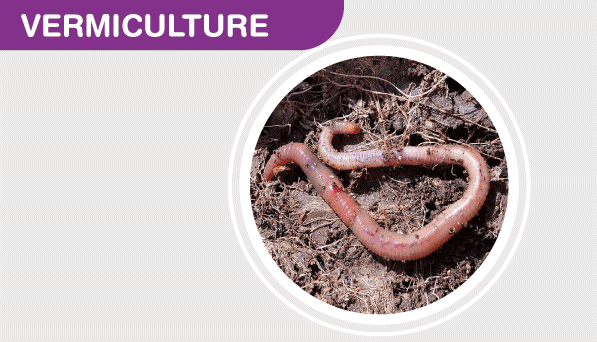Introduction
Pests have been a persistent challenge for farmers and gardeners throughout history. From voracious insects to stubborn weeds, these unwelcome guests can wreak havoc on crops and landscapes. In the past, the primary approach to pest control often involved the widespread use of chemical pesticides. While these chemicals could provide quick relief, they came with significant drawbacks, such as environmental pollution, harm to non-target species, and the development of pesticide-resistant pests.
Enter Integrated Pest Management, or IPM for short. IPM is a holistic and sustainable approach to managing pests that seeks to minimize their impact while safeguarding the environment and human health. In this guide, we will delve into the world of IPM, exploring its principles, benefits, and practical strategies for implementation. Whether you’re a seasoned farmer or a backyard gardener, understanding IPM can help you achieve pest control with minimal ecological footprint.
Understanding Integrated Pest Management (IPM)
At its core, IPM is a comprehensive and flexible approach to pest management that takes into account the biology and behavior of pests, the ecosystem in which they reside, and the specific circumstances of the situation. It emphasizes the following key principles:
Prevention: IPM starts with proactive measures to prevent pests from becoming a problem in the first place. This can include selecting pest-resistant plant varieties, practicing good sanitation, and implementing proper crop rotation.
Monitoring and Identification: Regular scouting and monitoring are crucial in IPM. Identifying pests and beneficial organisms accurately allows for targeted interventions when necessary.
Thresholds: IPM sets action thresholds, which are predetermined pest population levels at which action is warranted. Below these thresholds, pests are managed through non-chemical means.
Integrated Control Methods: IPM incorporates a range of control methods, prioritizing non-chemical options like biological control (using natural enemies), cultural practices (such as crop rotation), and physical methods (like trapping or exclusion). Chemical pesticides are only used as a last resort, and their selection is based on minimal environmental impact.
Evaluation: Continual assessment of the pest management program is essential in IPM. It involves analyzing the effectiveness of implemented strategies, adjusting them as needed, and documenting the results.
Benefits of Implementing IPM
Implementing Integrated Pest Management offers a multitude of benefits for both farmers and the environment. Here are some of the most significant advantages:
- Reduced Chemical Use: By prioritizing non-chemical control methods, IPM minimizes the reliance on chemical pesticides. This reduces the risk of pesticide residues on crops, decreases the development of pesticide-resistant pests, and mitigates harm to non-target organisms.
- Lower Costs: While there may be initial costs associated with implementing IPM practices, the long-term savings are often substantial. Fewer pesticide applications and increased crop yields contribute to cost reduction over time.
- Enhanced Crop Quality: IPM doesn’t just protect crops from pests; it also improves crop quality. Healthier, pest-free plants are more likely to produce higher-quality produce.
- Environmental Protection: By minimizing chemical pesticide use and fostering a more balanced ecosystem, IPM helps protect beneficial insects, birds, and other wildlife. It also reduces the risk of water and soil contamination.
- Long-Term Sustainability: IPM is a sustainable approach to pest management that can be integrated into farming and gardening practices for the long term. It aligns with the principles of ecological balance and responsible resource management.
- Human Health Benefits: Reduced exposure to pesticides benefits the health of both agricultural workers and consumers. It decreases the risk of pesticide-related health problems and contributes to safer food production.
Practical Implementation of IPM
Now that we understand the principles and benefits of IPM, let’s delve into how to implement this approach effectively:
- Start with Education: Familiarize yourself with the pests in your area, their life cycles, and their vulnerabilities. Learn about the beneficial organisms that can assist in pest control.
- Monitor Regularly: Regularly inspect your crops or garden for signs of pests. Keep records of pest populations and any damage they cause.
- Set Action Thresholds: Determine at what point pest populations warrant action. This could be based on the number of pests present, the level of damage observed, or other specific factors.
- Utilize Cultural Practices: Implement cultural practices such as crop rotation, companion planting, and proper irrigation to create an environment less conducive to pests.
- Biological Control: Encourage natural predators and parasites that feed on pests. You can release beneficial insects like ladybugs or parasitoid wasps to help keep pest populations in check.
- Mechanical and Physical Control: Use physical barriers like row covers to exclude pests. Employ traps and barriers to catch and deter pests.
- Chemical Control as a Last Resort: If all else fails, consider the judicious use of chemical pesticides. Choose low-impact, target-specific products and follow label instructions precisely.
- Evaluate and Adjust: Continuously assess the effectiveness of your IPM program. Be prepared to make adjustments to your strategies based on monitoring and evaluation results.
- Record Keeping: Maintain detailed records of your IPM activities, including pest populations, control methods used, and their outcomes. This information is valuable for future decision-making.
- Seek Expert Guidance: If you’re unsure about identifying pests or implementing control measures, don’t hesitate to seek advice from local agricultural extension services or experienced growers in your area.
Conclusion
Integrated Pest Management is a sustainable and eco-friendly approach to pest control that empowers farmers, gardeners, and land stewards to protect their crops and the environment. By focusing on prevention, monitoring, and a diverse array of pest control methods, IPM offers a holistic solution to the age-old problem of pests.
As individuals and communities increasingly recognize the importance of sustainable and responsible agriculture, IPM has emerged as a key tool in achieving these goals. By following the principles and strategies outlined in this guide, you can take important steps towards implementing IPM in your own farming or gardening practices. In doing so, you’ll contribute to healthier ecosystems, reduced pesticide use, and the long-term sustainability of our food supply.
In the quest for pest management solutions that balance human needs with ecological responsibility, Integrated Pest Management stands as a beacon of hope, showing us the way forward in our shared journey towards a more sustainable future.






